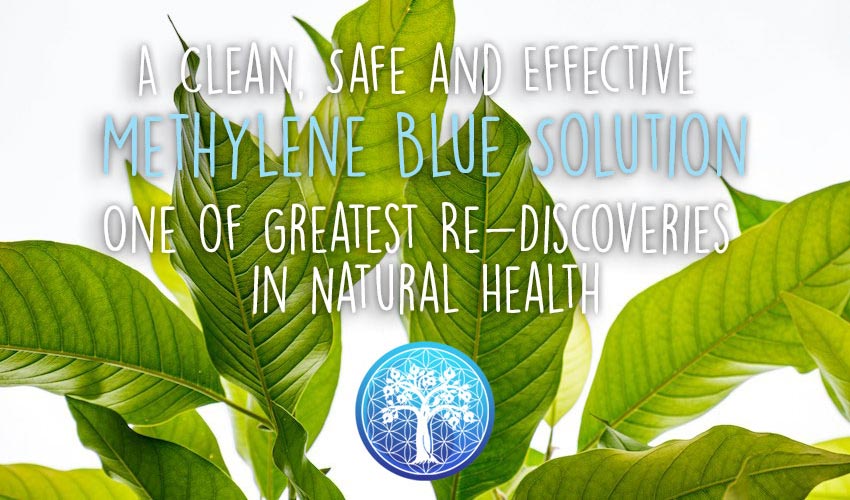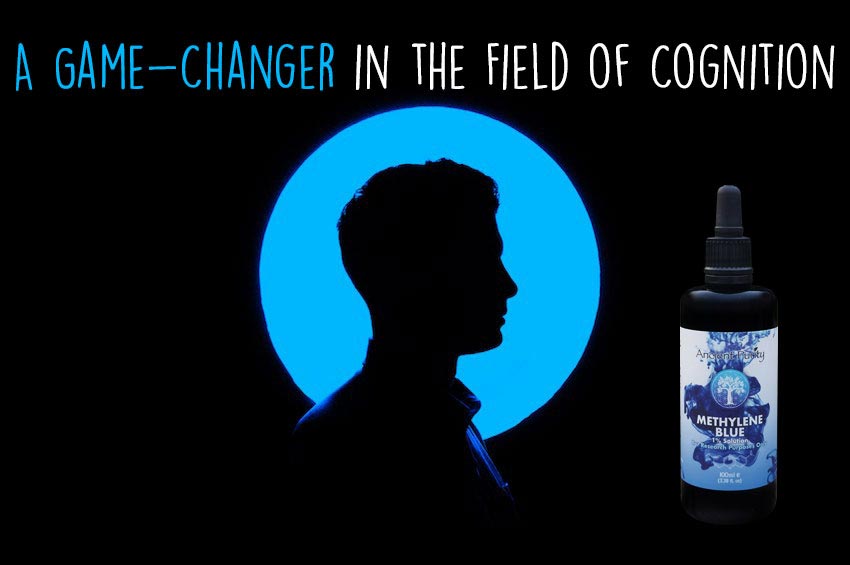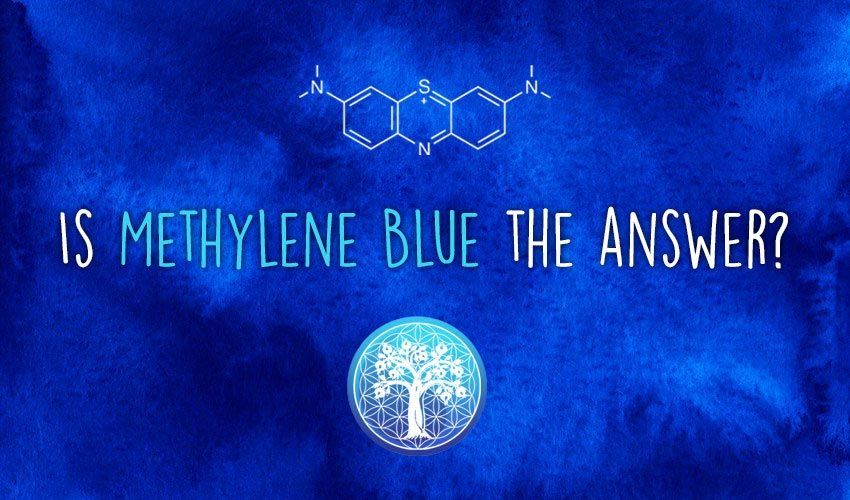Methylene Blue - Understanding the Power
Maybe you've seen Methylene Blue at Ancient Purity in the last few weeks or had the newsletter on it, we have so many questions and I'd like to start making things clearer and publish some of my own reading and stuff I found as I discovered exactly how to use it. Trust me I'm still learning, which is why we sell it for Research Purposes. Methylene blue serves as the precursor molecule for hydroxychloroquine and chloroquine, two off-patent drugs widely used to combat malaria but also viruses. Originally renowned as a disinfectant for fish tanks and a dye for blue denim, methylene blue holds the distinction of being the first synthetic drug in modern pharmaceutical history, synthesised in 1876. Since its inception, its medicinal significance has been extensively unraveled. The inaugural application of methylene blue in medicine was its deployment against malaria. In 1890, Paul Ehrlich, a distinguished scientist at Berlin's Charité Hospital in Germany, unveiled its capability to impede an enzyme crucial for the survival of the malaria parasite.
Furthermore, MB contributed to the development of one of the earliest antipsychotic medications. Its derivatives have fostered the creation of antibiotics, antiseptics, and other therapeutic agents. Historically, it was a common remedy for urinary tract infections and even found utility as an antiviral agent in blood transfusions. Presently, Methylene Blue remains a ubiquitous presence in hospitals worldwide, revered as the sole antidote for metabolic poisons, encompassing substances that disrupt oxygen transport or usurp oxygen from blood or mitochondria. For instance, in cases of carbon monoxide or cyanide poisoning, intravenous administration of Methylene Blue is imperative. There is also speculation regarding its potential efficacy in managing acute respiratory infections. Notably, Methylene Blue exerts a hormetic effect, wherein its impact varies depending on dosage. At higher doses, typically utilised in emergency settings to counter methemoglobinemia (a condition where hemoglobin's iron is oxidised to a less functional state), methylene blue can paradoxically induce the same condition. Intermediate doses exhibit negligible effects. Additionally, while low doses exhibit antioxidant properties, higher doses act pro-oxidatively, capable of eradicating bacteria and tumor cells.

Methylene Blue is an Antioxidant
Dr Francisco Gonzalez-Lima, Ph.D., is an expert on Methylene Blue research has predominantly delved into the enduring benefits of low-dose methylene blue for non-acute applications, particularly in terms of neuroprotection and cognitive enhancement. Among its various mechanisms of action, a notable aspect is its interaction at the electron level. He elucidates: "The human body utilises electrons within the mitochondria's electron transport chain, derived from electron donors sourced from our diet. Essentially, the energy contribution from our food is hinged upon the generation of these electron donors, which subsequently fuel the electron transport chain within the mitochondria. Oxygen serves as the ultimate electron acceptor in this process, hence termed oxidation.
Within the mitochondria, this process is known as oxidative phosphorylation. Methylene Blue acts as an electron carrier, facilitating this process by directly contributing electrons to the electron transport chain, obtaining electrons from surrounding compounds, and thereby sustaining oxygen consumption and energy production. Consequently, it aids in the full reduction of oxygen into water. Remarkably, methylene blue exhibits dual functionality uncommonly found together. It functions as an antioxidant by neutralising oxygen into water via electron donation to the electron transport chain, while simultaneously fostering energy production through increased ATP formation during oxidative phosphorylation.
Contrary to many compounds that enhance energy metabolism but induce oxidative stress, methylene blue diverges from this trend. It enables heightened oxygen consumption rates, elevates ATP production for energy metabolism, and concurrently mitigates oxidative stress, thereby reducing oxidative damage at mitochondrial, cellular, and membranous levels.Essentially, acting as an electron carrier, methylene blue operates akin to a battery. Unlike other compounds with similar functions, it navigates past points of interference, such as cyanide poisoning, via electron cycling. Thus, it ensures the uninterrupted functionality of mitochondrial respiration, oxygen consumption, and energy production, without inducing damaging oxidation."

Improve Your Mitochondrial Respiration Improve your Health & Cognition
Methylene Blue can also prove beneficial in cases where impaired blood flow impedes the delivery of oxygenated haemoglobin to the tissues. In such instances, methylene blue aids in counteracting the diminished blood flow by optimising the efficiency of mitochondrial respiration. Robust blood circulation is especially crucial for brain functionality, and numerous elderly individuals suffer from chronic hypoperfusion, contributing to neurodegeneration and memory impairments. According to Gonzalez-Lima, methylene blue can help prevent these issues.To summarise, within your mitochondria's electron transport chain are five complexes, primarily tasked with facilitating the flow of electrons generated from food, predominantly carbohydrates and fats, in the form of acetyl CoA. Occasionally, the electron transport chain encounters blockages or impairments, which Methylene Blue can bypass. In a state of good health, low doses of methylene blue enhance oxygen consumption, mitochondrial respiration, and ATP production beyond baseline levels, essentially optimising the entire system. Hence, it acts as a metabolic enhancer, not merely as an antidote for metabolic toxins and other inhibitory processes. The pivotal complex, Cytochrome c Oxidase, responsible for catalysing the conversion of oxygen into water, is obstructed by cyanide. However, methylene blue can introduce electrons wherever there is an obstruction.
Furthermore, in a state of good health, low doses of methylene blue enhance oxygen consumption, mitochondrial respiration, and ATP production beyond baseline levels, essentially optimising the entire system. Hence, it acts as a metabolic enhancer, not merely as an antidote for metabolic toxins and other inhibitory processes. Methylene Blue's impact on mitochondrial respiration is also linked with the biochemical upregulation of your overall oxygen consumption machinery and haemodynamic processes that augment local tissue blood supply. As elucidated by Gonzalez-Lima in the interview, this upregulation persists even after methylene blue is eliminated from your system (mainly through unchanged excretion in urine, as the body minimally metabolises it), and over time, it can actually increase the number of mitochondria. This augmentation in your brain can benefit cognition, given that the brain is the organ most reliant on energy. Moreover, Methylene Blue activates the Nrf2 pathway. Nrf2 is a transcription factor that, when activated, translocates into the cell nucleus and binds to antioxidant response elements (AREs) in the DNA. Subsequently, it triggers the transcription of additional cytoprotective enzymes such as glutathione, superoxide dismutase, catalase, glutathione peroxidase, phase II enzymes, heme-1 oxygenase, and numerous others.

Other Methylene Blue Benefits
Perhaps one of the most groundbreaking benefits of methylene blue lies in its potential for preventing and treating dementia, neurodegenerative ailments like Alzheimer’s and Parkinson’s diseases, as well as neural injuries stemming from strokes and traumatic brain injuries (TBIs). This is particularly pertinent as certain pin pricks have significantly heightened the incidence of strokes. As elucidated by Gonzalez-Lima: "In any process where augmented oxygen-dependent energy production plays a pivotal role, methylene blue can prove instrumental. One of our initial studies that yielded impressive results focused on an ocular model. We chose the eye due to the accessibility of the retinal tissue in animals, facilitating direct injections. Rotenone, a broad-spectrum pesticide and inhibitor of Complex 1, hinders mitochondrial respiration, leading to notable atrophy and degeneration of the retinal layer. However, the presence of methylene blue can avert this progression by sustaining mitochondrial respiration, thereby safeguarding the tissue from damage.
This model mimicked optic neuropathy induced by mitochondrial abnormalities, which represents a prevalent cause of blindness among younger individuals. We conducted this study to substantiate in vivo the neuroprotective efficacy of methylene blue, a phenomenon we observed in subsequent investigations involving brain tissues. Methylene Blue demonstrates protective effects in cases of ischemic and hemorrhagic strokes. Additionally, we have documented its efficacy in a study involving hypoxia, wherein we deliberately reduced oxygen supply to the animals. Utilizing fMRI noninvasively, we observed an elevation in cerebral metabolic rate for oxygen consumption in the presence of methylene blue under hypoxic conditions. Regarding dementia, once tau protein accumulates within neurons, the neurons are essentially metabolically impaired beyond recovery. Acting upon this stage cannot restore the metabolic functionality or health of the neurons in a meaningful manner. Typically, biomarkers do not serve as viable therapeutic targets as they may lack a causal relationship with the disease." Within biohacking circles, low-dose Methylene Blue is hailed as a nootropic, a compound purported to enhance cognitive function. While some advocate for sublingual or buccal application (under the tongue or inside the cheek), optimal absorption occurs through ingestion, as stomach acid enhances its bioavailability.
In my opinion, one of its most crucial applications lies in its highly effective combat against urinary tract infections (UTIs). Many elderly individuals are prescribed antibiotics, disrupting their microbiome. Methylene Blue, historically administered at a daily dose of 65 mg and once sold in pharmacies as Urolene Blue, offers a compelling alternative. Since the body minimally metabolises methylene blue, it is primarily excreted by the kidneys into the bladder, where it accumulates at significant concentrations over time, exerting potent oxidant stress that effectively eradicates virtually any pathogen within the bladder. Furthermore, it yields the additional "side effect" of enhancing brain health and reducing dementia risk. In my view, neglecting to utilise methylene blue in UTI management among the elderly constitutes medical negligence. It unequivocally stands as the safest and most efficacious therapeutic option.

Methylene Blue Contraindications
Whilst Methylene Blue is generally considered safe, there are certain contraindications to be mindful of. One such contraindication is glucose-6-phosphate dehydrogenase (G6PD) deficiency, which also prohibits high-dose ascorbic acid treatments, posing a potential risk of fatality. Additionally, Methylene Blue exhibits mild monoamine oxidase (MAO) inhibitory effects, meaning that taking high doses alongside selective serotonin reuptake inhibitor (SSRI) antidepressants could potentially precipitate serotonin syndrome, a serious medical condition. However, the likelihood of this occurring is minimal. Gonzalez-Lima elaborates: "Regarding the cautionary advice concerning SSRIs, the issue does not lie with Methylene Blue per se, but rather with the dosage of the SSRI. The concern arose from a specific application of methylene blue during parathyroid surgery as a staining agent... To my knowledge, there have been no more than five reported cases in which patients, while under anaesthesia, still had traces of SSRIs in their system. In these cases, repeated flushing with methylene blue in the exposed neck area exceeded the recommended doses we have discussed.
The US FDA responded to this by issuing a warning. However, this has been scrutinised by surgeons and pharmacologists at the Mayo Clinic, who authored a rebuttal paper indicating that there is no evidence to suggest that oral Methylene Blue interacts with therapeutic doses of serotonergic medications, particularly SSRIs. They asserted that the incidents occurred under specific surgical conditions. Canada limits the warning to that particular medical procedure, whereas our FDA extended it to encompass any serotonergic medication. I believe there is absolutely no evidence to suggest that oral methylene blue interacts with SSRIs within the low-dose range. As for its MAO inhibitory function, this is only significant at higher concentrations in the higher dose range, not at low doses. Therefore, any antidepressant effects of methylene blue — albeit limited and only evident after repeated cumulative treatments — may be attributed partly to its role as an MAO inhibitor. Moreover, its metabolic enhancing properties counteract certain depressive symptoms, such as low energy levels commonly associated with depression. Hence, it does exhibit efficacy in alleviating depression symptoms. Unfortunately, this warning may deter some physicians from considering its use in conjunction with SSRIs."

Methylene Blue Dosage
Ok let me finish off with the multiple million dollar / pound question... How much, When, How Long etc. I wish there is one single definitive answer, again it's why at Ancient Purity we are selling it for Research Purposes. However I have a good enough handle on it to share my thoughts. As previously mentioned, Methylene Blue exhibits hormetic properties, meaning that low doses produce effects contrary to high doses. While not every possible dose response has been explored, as a general rule, the benefits discussed by Dr Gonzalez-Lima in this interview are based on dosages ranging from 0.5 milligram per kilogram of bodyweight to 4 mg per kg. He acknowledges that lower doses may also be effective, although they haven't been extensively studied. For acute treatment, the upper limit typically ranges between 3 mg to 4 mg per kg, which coincides with the dosage administered intravenously as an antidote for methemoglobinemia. For non-acute, more prolonged treatment, a dosage of 0.5 mg to 1 mg per kg per day is more effective. With a half-life of 12 to 13 hours, once-daily dosing suffices.
Dr Gonzalez-Lima provides an example of how Methylene Blue has been utilised in the treatment of fears and phobias: "One therapeutic application involves the formation of memories to diminish fear. Individuals suffering from phobias can be exposed to specific situations related to their phobia, and through a process known as extinction learning, their fear response is diminished. In such cases, we administer Methylene Blue once after this extinction learning to facilitate memory consolidation. Following the learning process, consolidation occurs, which necessitates energy. By enhancing energy availability during the consolidation phase, which unfolds over several hours, the subsequent reinforcement of the extinction memory becomes more effective. We've also employed this approach in treating post-traumatic stress disorder (PTSD) using prolonged exposure therapy. In these instances, Methylene Blue is administered after different sessions where effective extinction learning is observed, thereby reinforcing therapeutic progress. For brain health, nootropic effects, and the prevention or treatment of dementia, Gonzalez-Lima recommends and utilises a dose of 0.5 mg to 1 mg per kg per day, or as needed.

Use a High-Quality Methylene Blue
Equally important as getting the dosage right is selecting the correct product. There are three main types of methylene blue: industrial, chemical, and pharmaceutical-grade. The only suitable variant for medicinal use is pharmaceutical-grade. It is imperative to avoid ingesting methylene blue intended for fish tanks, typically found in pet stores. Industrial-grade Methylene Blue contains numerous impurities and generally only consists of 10% to 25% Methylene Blue. Chemical or laboratory-grade methylene blue, used for staining purposes in laboratories, boasts higher purity but is still unsuitable for medicinal purposes due to heavy metal contaminants like lead, cadmium, and arsenic. Prolonged exposure to these impurities can lead to toxicity. It is advisable to purchase a stainless steel spoon calibrated to measure 8-10 mg, as measuring without one can be challenging.
Pharmaceutical-grade Methylene Blue is over 99% pure. This grade is used for intravenous injections as an antidote or for oral administration. These products are labelled USP, indicating compliance with the United States Pharmacopeia standards. According to Dr Gonzalez-Lima, USP-grade Methylene Blue boasts higher purity compared to European pharmaceutical-grade, which has fewer stringent requirements. Consuming Methylene Blue with ascorbic acid (Vitamin C) aids absorption. While methylene blue may not be readily available at local pharmacies, many compounding pharmacies can procure pharmaceutical-grade variants. "Ascorbic acid facilitates the reduction of methylene blue, promoting its cycling," explains Gonzalez-Lima. Given the significance of mitochondrial health, Methylene Blue emerges as a straightforward yet remarkably effective means of enhancing overall health and cognitive function. So use our pure Vitamin C powder on the same day and get your Methylene Blue that ticks all the boxes HERE.















